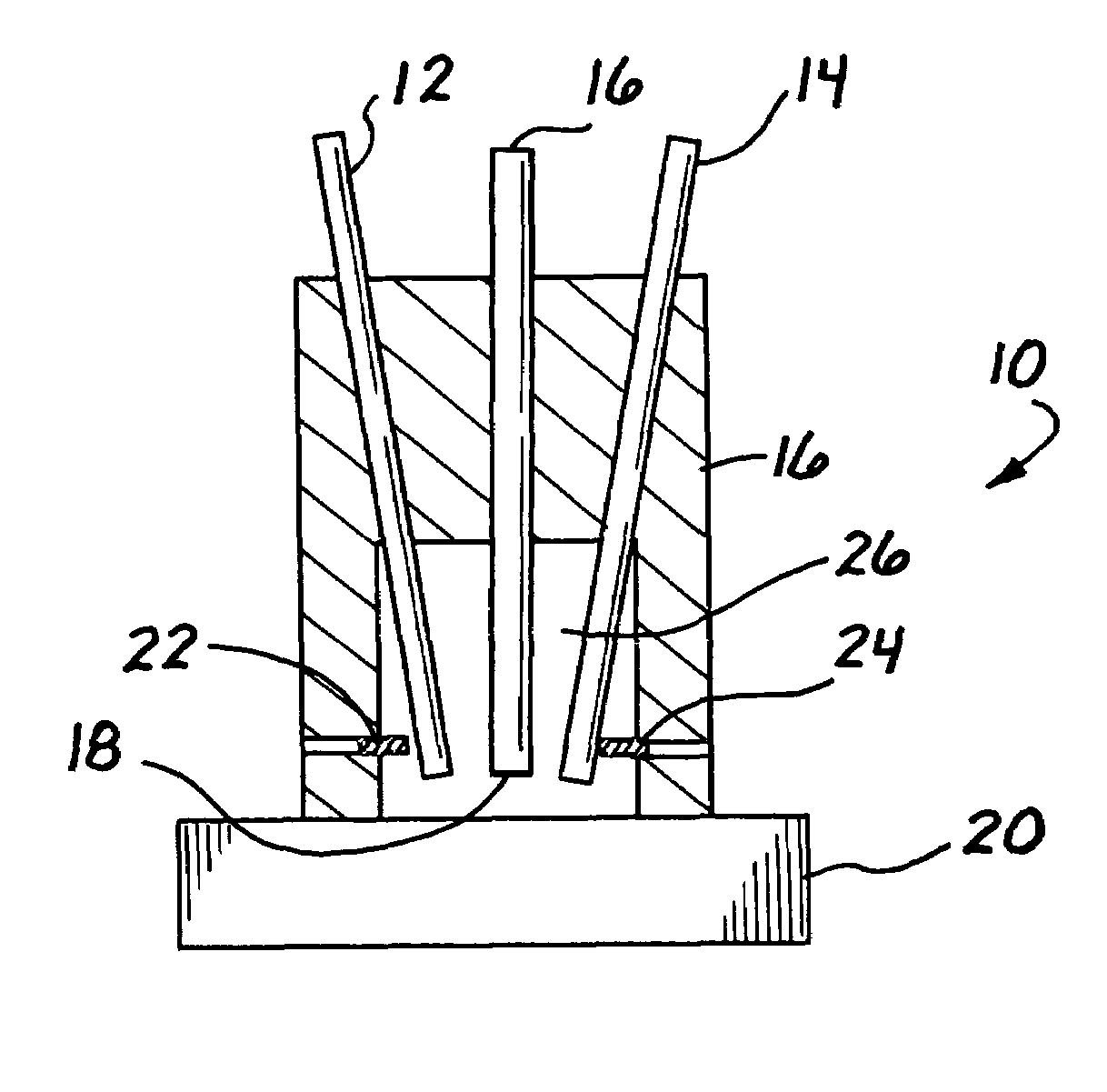In vivo port wine stain, burn and melanin depth determination using a photoacoustic probe
a photoacoustic probe and port wine technology, applied in medical science, surgery, diagnostics, etc., can solve the problems of subjective and inexact depth determination, major cause of burn trauma worldwide, and further damage to viable tissu
- Summary
- Abstract
- Description
- Claims
- Application Information
AI Technical Summary
Benefits of technology
Problems solved by technology
Method used
Image
Examples
Embodiment Construction
[0056]A photoacoustic method for determining burn depth might provide a means to exploit the ability to detect blood perfusion, as in the optical methods mentioned above, with the robustness of acoustic propagation through tissue, giving a real time, non-invasive determination of the exact depth of burn injury. Unlike the aforementioned optical methods, photoacoustic generation does not use photons as a signal, but as a means for delivering energy to subsurface blood vessels in the viable tissue underlying the thermally damaged layer. Once photon energy is absorbed, an acoustic wave is generated, which travels back to the skin surface where a detector measures acoustic wave shape and propagation time. Such data can be used to develop a depth map of the injured tissue.
[0057]We developed a photoacoustic probe 10 for non-invasive measurement of burn depth, consisting of an optical fiber delivery system coupled with a piezoelectric detector 18 for acoustic detection. A frequency doubled...
PUM
 Login to View More
Login to View More Abstract
Description
Claims
Application Information
 Login to View More
Login to View More - R&D
- Intellectual Property
- Life Sciences
- Materials
- Tech Scout
- Unparalleled Data Quality
- Higher Quality Content
- 60% Fewer Hallucinations
Browse by: Latest US Patents, China's latest patents, Technical Efficacy Thesaurus, Application Domain, Technology Topic, Popular Technical Reports.
© 2025 PatSnap. All rights reserved.Legal|Privacy policy|Modern Slavery Act Transparency Statement|Sitemap|About US| Contact US: help@patsnap.com



